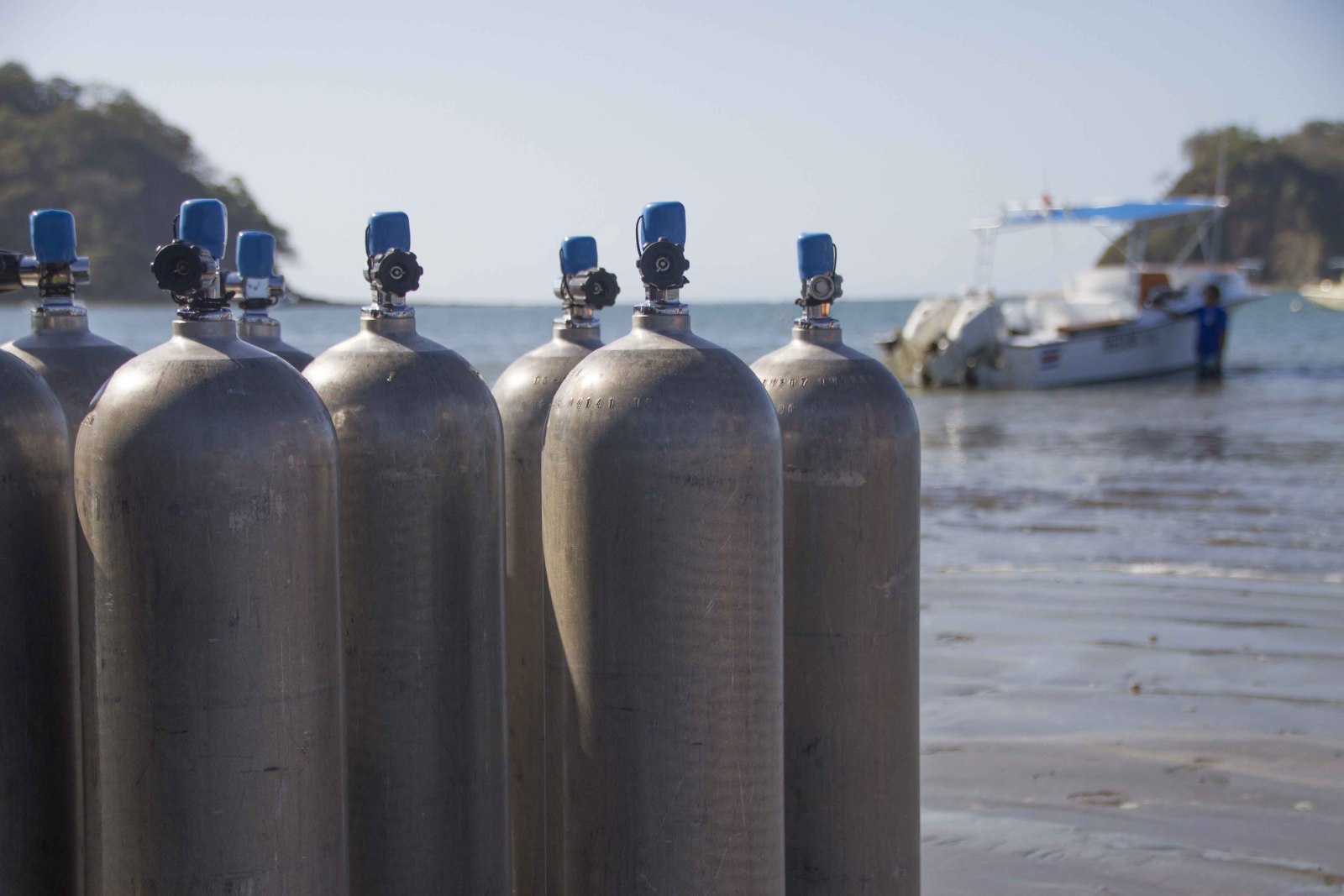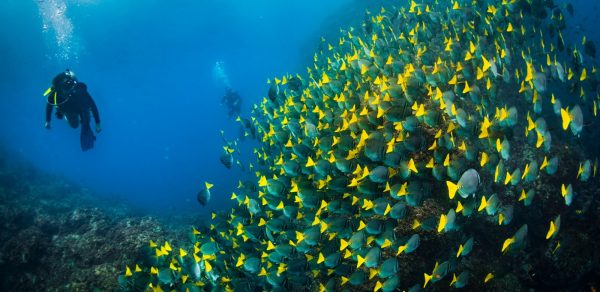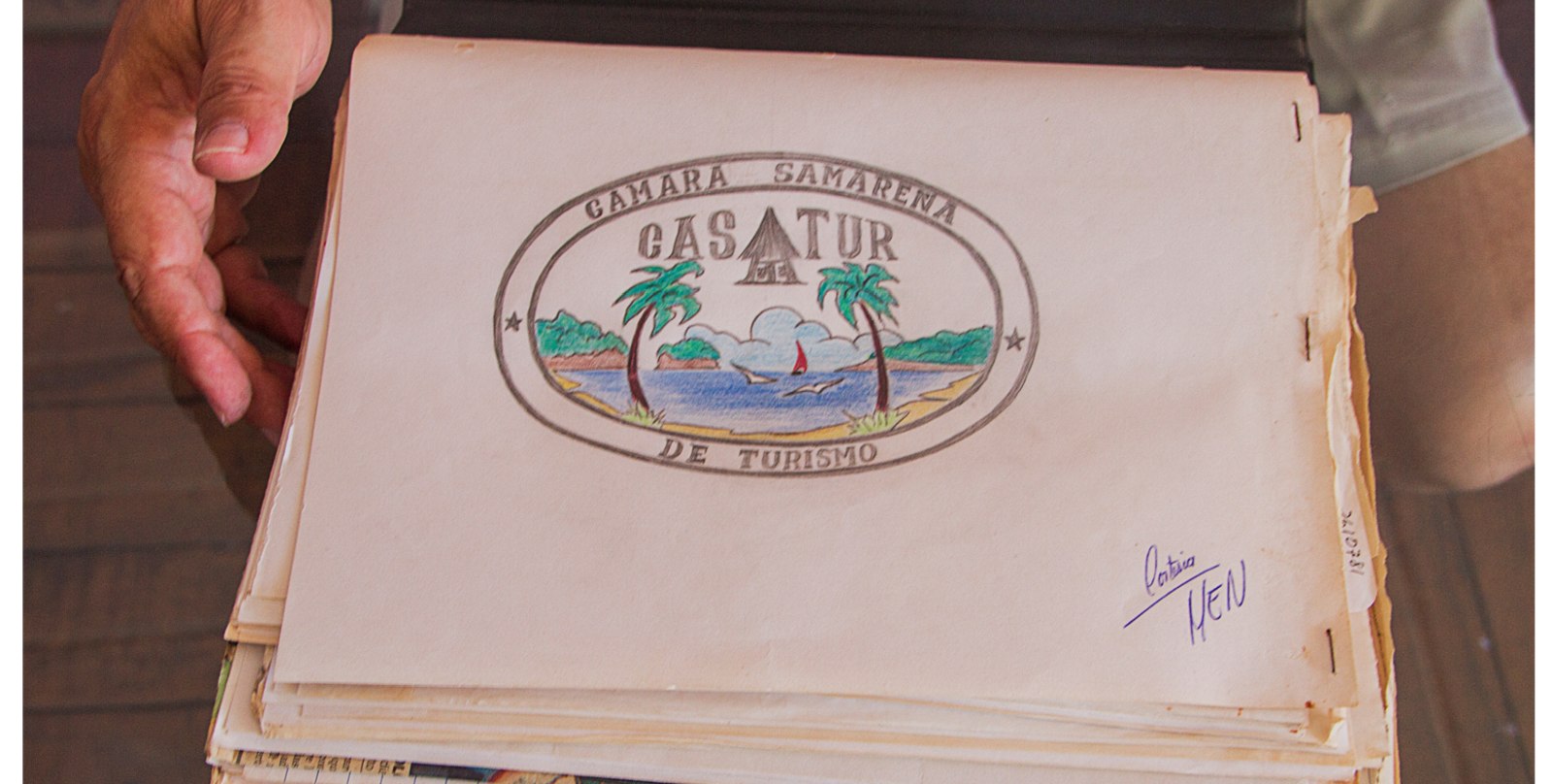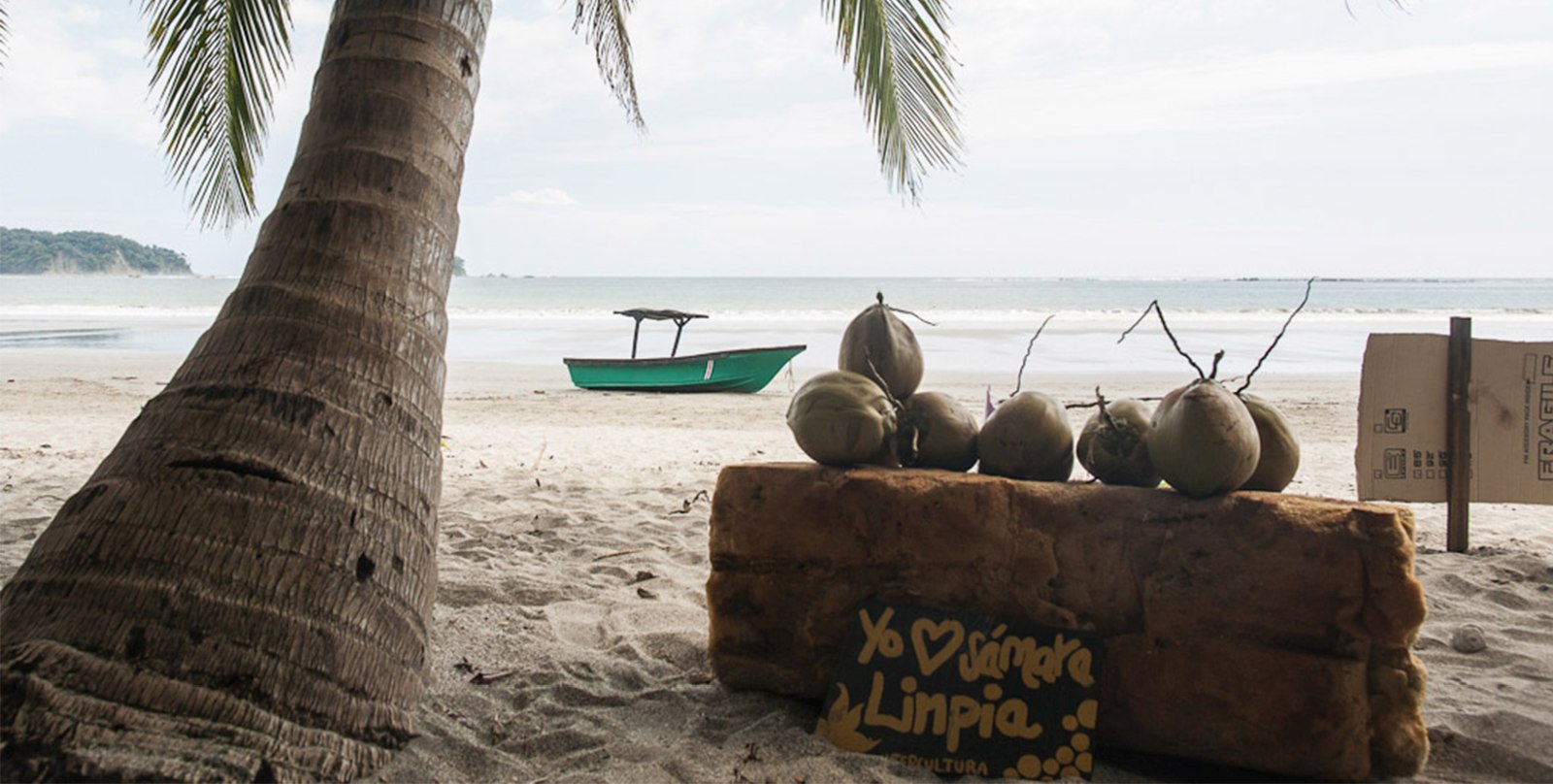
He takes me by the hand, guiding me gently through the water so I feel safe and I’m breathing fairly calmly. He points out a puffer fish, trying to catch it’s tail as it speeds away. Then he reaches down to pick up a bright blue starfish and hands it to me. Later he hands me a conch shell and a red sea snail peaks out timidly. I don’t feel like the Little Mermaid exactly; after all, I’ve got a tank of oxygen strapped to my back, I’m breathing through my mouth and I have two fins on my feet instead of a tail. Nevertheless, I am exploring a magical kingdom under the sea.
Steeve Hardy, a dive master from Quebec, opened Freedom Diving in Samara on December 28, 2012. During tourist season, from November to March, he takes small groups out on his boat, The Scorpion, to share with them his favorite dive spots around Samara’s Isla de Chora, as well as Carrillo and Buena Vista Beach areas.
He limits groups to no more than five divers, and up to 8 people with snorkeling, so he can personally ensure everyone’s safety. He prides himself on safety, with new equipment in top condition.
Hardy has been diving for six years now and has made more than 300 dives. He learned here, and all of his relatives have joined him diving, including his youngest 7-year-old nephew. He remembers his first time going down, seeing the air bubbles going up and light filtering down, no phones, no computers—just you and the fish, which he describes as a wonderful feeling. And no matter how many times he dives in the same spot, he says it’s never the same.
“I don’t do this because I have to. I do this because I love it,” he tells me, and his enthusiasm for the sport shows. I even catch him singing a couple of times on the boat: “It’s a beautiful day ba ba ba ba.”
The discovery course for beginners or those who want a refresher course includes instruction and practice in a swimming pool before going out into the ocean. This way you already know what it feels like to breath underwater and you learn how to get water out of your mask, recover your breathing regulator if it happens to fall out of your mouth and float and move in the water. Then he will take you for two dives. The first will be shallow, around 4 meters (13 feet), to get comfortable, then a snack break with fruit, cookies, water and tea, followed by the “real” dive no more than 12 meters (39 feet) deep.
Hardy takes experienced divers on deeper descents of 17 to 22 meters (55 to 72 feet). He estimates that about 60% of his clients are certified divers. Each dive lasts about 40 minutes to an hour.
Among the aquatic life you might see, aside from tons of colorful fish and coral, are eels, rays, sea turtles, and if you’re lucky, in the orange coral you might spot a small sea horse. Irvin Mendoza Ruiz, the ship captain, estimates that they see turtles about three times a week. He also spotted whales off the boat in early January.
Another possibility is seeing sharks. This is what initially attracted both Hardy and Mendoza Ruiz to diving. Not to worry, they assure that the whitetip reef sharks found here are docile and generally hide under the rocks. It took three years of diving for Hardy to see his first shark, and then what he finally saw were just its round eyes. “Once you know them, you can be very near,” he affirmed. “I am more afraid of dolphins than sharks. Dolphins are curious and will knock against you.”
On their second dive, near Buena Vista, Canadian Tim Tokarsky and his sons Griffin and Alex saw a shark tucked in a cave. “He was close enough to touch,” related Tokarsky, who has completed 100 dives in places around the world. Comparing Samara to other places he has dived, he said, “It’s different. The rock formations are very nice and there are lots of different fish that you don’t see in the Caribbean.”
I didn’t see any sharks during my dives, but I saw an eel, a large lobster, a wide variety of star fish and colorful fish with fluorescent accents, some as small as my fingernail and others quite large. Schools swam above and around us, and below us I watched delicate pink sea fan coral shivering in the current like trees in the wind.
The water here is always warm, between 28 and 30 degrees Celsius (86 to 90 degrees Fahrenheit). “It’s like a big bathtub,” Hardy remarked. Even so, a skin-tight wetsuit ensures that you stay warm, as well as protecting you from rocks and jellyfish.
When you’re done diving, you will likely feel thirsty, hungry and a bit tired and will sleep very well that night. Keep in mind that you should not fly in an airplane for at least 18 to 24 hours after diving. Freedom Diving also offers snorkeling and dolphin tours. For reservations, call 2656-0479, email [email protected] or stop by the dive shop, next door to Super Samara.







Comments